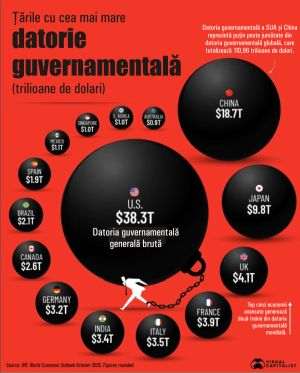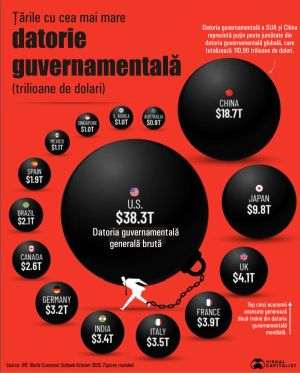The distribution of personal wealth varies significantly across the world's regions, reflecting economic disparities driven by differences in development, resource availability and access to finance, according to an analysis by visualcapitalist.com.
It looks at the share of adults in each global region who fall into four wealth bands: under $10,000; $10,000 to $100,000; $100,000 to $1 million; and over $1 million. The data presented in the analysis comes from the UBS Global Wealth Report 2024 and covers 56 markets, representing approximately 92.2% of global wealth. The UBS report data does not include most African countries.
According to the source, most adults in the lowest wealth category (under $10,000) are concentrated in the Asia-Pacific (APAC) region: 70%. On the other hand, the highest wealth category (over $1 million) is dominant in the Americas, but also in the EMEA region (Europe, the Middle East and Africa). Thus, the Americas, which include North America and South America, have the highest share (42.7%) of adults worldwide with a wealth of over $1 million, which shows a concentration of HNWIs (high-net-worth individuals) in this region. In EMEA, the proportion is 30.9%, and in Asia-Pacific, 26.4%.
At the country level, the US is home to almost 22 million people with a wealth of over $1 million, the highest number of millionaires of any country, according to UBS. That means the U.S. is home to 38 percent of the world's millionaires in 2023. Mainland China came in second, with just over 6 million millionaires, nearly double the number of the third-place country, the United Kingdom.
But according to a survey by Northwestern Mutual, cited by investopedia.com, only about a third (32 percent) of high-net-worth individuals in America, those with at least $1 million in investable cash, consider themselves wealthy. Advisors who work with HNWI clients say that's because discretionary spending is increasing as the individual makes more money.
"The problem is that as clients consolidate their incomes, their spending is also increasing," said Eric Roberge, founder of Beyond Your Hammock, who works with clients in their 40s with net worths of $3 million to $5 million. He adds: "Whether they're making $50,000 to start with or more than $500,000 as a family, they still struggle to save, afford the house they live in, provide child care and go to college. So the expenses are higher."
The calculations look different depending on where the HNWI lives and the cost of living. In areas with a higher cost of living, higher salaries may not go very far. For example, many workers in Silicon Valley may have higher net worth but face higher housing costs than similar workers in other parts of the country, says Anna Sergunina, president and CEO of MainStreet Financial Planning.
"I might have a client who makes $300,000 as a household, which is a lot. But in the Boston area, the high cost of living eats into that money," says Eric Roberge.
Also, many clients who have just passed the $1 million HNWI threshold may not realize it or actively talk about it, says Sergunina, explaining: "This is probably also because their aggregate net worth, including retirement accounts, brokerage accounts, and even real estate assets such as a house, could exceed the $1 million threshold just on paper."















































